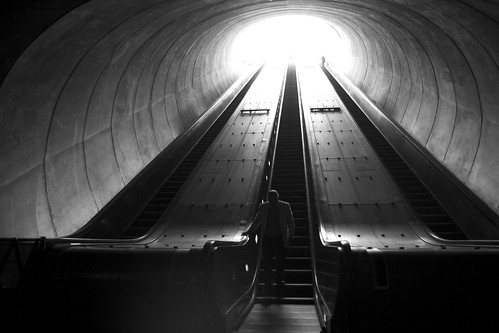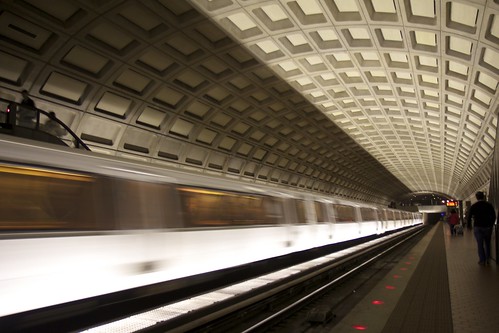The Light at the End
[
Perhaps it is hasty to simply dismiss the swamps of the Potomac and Anacostia Rivers as blighted by the pernicious lies spewing forth from the numerous bullshit factories lining their banks. There is beauty to be found there after all.
I first went to Washington in the summer of 1991, with my late mother, and my now-stepfather and his daughter. We rented a van in Knoxville for reasons lost to the ages and took the interstate route up along the Blue Ridge. The goal, I suppose, was the standard civics lesson for an eighth- (me) and ninth-grader (her): walk around, take pictures of the big marble buildings where things were presumed to happen according to the Schoolhouse Rock version of American representative democracy, see an actual copy of the documents the first few lines of which we’d just had to memorize, have a look at the Apollo 11 Columbia capsule. Mom was an old hippie who’d been here in ‘69 marching against the war (in Vietnam), so we spent more time at the minimalist Wall searching for the name of Mom’s fallen pen-pal in the Army than we did at any of the more grandiose neoclassical temples of the American pantheon.
Off the Mall, though, DC in ‘91 was an example of the conditions that led to the American political obsession with law and order, ever-longer sentences, and ever-bigger prisons. We stayed in an apartment a bit off Dupont Circle we loaned out from a friend of Mom’s; the friend warned us to stay on our side of 14th NW after dark. We parked the van north of Logan Circle one afternoon and came back the next morning to find its windows smashed, the radio stolen, and a parking ticket for a hundred bucks under the windshield wiper.
I remember these things, but that’s not what’s memorable to me about this trip. Washington was the second actual city I’d been to, but the first I’d ever walked in1. For a thirteen year old kid from the suburbs, the hint of freedom promised by going from point A to point B without a car was so weird that I didn’t realize what it was until after we’d wrapped the van doors in plastic, vacuumed up the sawdust from the shattered wood paneling, and headed back to Knoxville. Washington had places you could walk to. I wasn’t a huge fan of the actual walking, mind you. As a fat kid with ill-fitting khaki shorts and the cardiovascular system of an eighty year old alcoholic smoker, the walking part sucked, so I didn’t notice how brilliant the theory of walking was until I was stuck back home in Memphis2.

What’s more, Washington had a subway. The Dupont Circle station was our home station on this trip, and decending the perfectly circular hole in the ground pierced by the longest escalator I’d ever even conceived of to stand on the platforms in the gridded, arched tunnels that generated their own wind was, for me, living science fiction. Sure, it was useful for all the other stuff we wanted to do, but it was a destination in its own right. I had to beg my mom to ride the red line with me out to Maryland and back, just because we could. My love of the machinery of public transport began there at the end of the Dupont Circle escalator, and that led to an irrational enthusiasm for public transport itself3.
The magic of that Washington is long gone now. Years of experience and rapid-onset cynicism have morphed the city into its symbology in my mind. Washington is the corruption of K Street, the willful idiocy of Congress, the five-to-four election, the permanent campaign, the national security state. Washington isn’t killing America, per se, but the power concentrated there is a magnet for those who are.
But it was nice, for one day last week, to go visit the place where I started my journey to the 12 Stettbach-Flughafen and the S14 Hinwil-Zürich via Wallisellen.
1San Francisco wins chronologically, but as I was always accompanied by my grandfather, who didn’t walk so well, and my grandmother, who didn’t breathe so well, San Francisco was a car town as far as I was concerned until I walked across it fifteen years later.
2Actually, it took much longer than that. I started driving less than a year later, and didn’t look back. I first put the theory of walking into practice two years after that, after I had two wrecks in the span of a week and had to trudge the 1200m to my job stocking shelves and serving yogurt at a strip-mall drug store, because we were out of cars. At that point it just seemed unpleasant, as Memphis was in no way meant to be walked. But I did remember what DC had been like, and idly wished for a subway to whisk me home from the strip mall. The fact that I even noticed a 1200m walk is somewhat alien to me today.
3As evidence of the irrationality of this enthusiasm, I submit that I once regularly rode MARTA from Briarcliff and North Druid Hills to Georgia Tech via bus to Lindbergh Center and from Arts Center stations. Ask an Atlantan to explain how pointless that is.